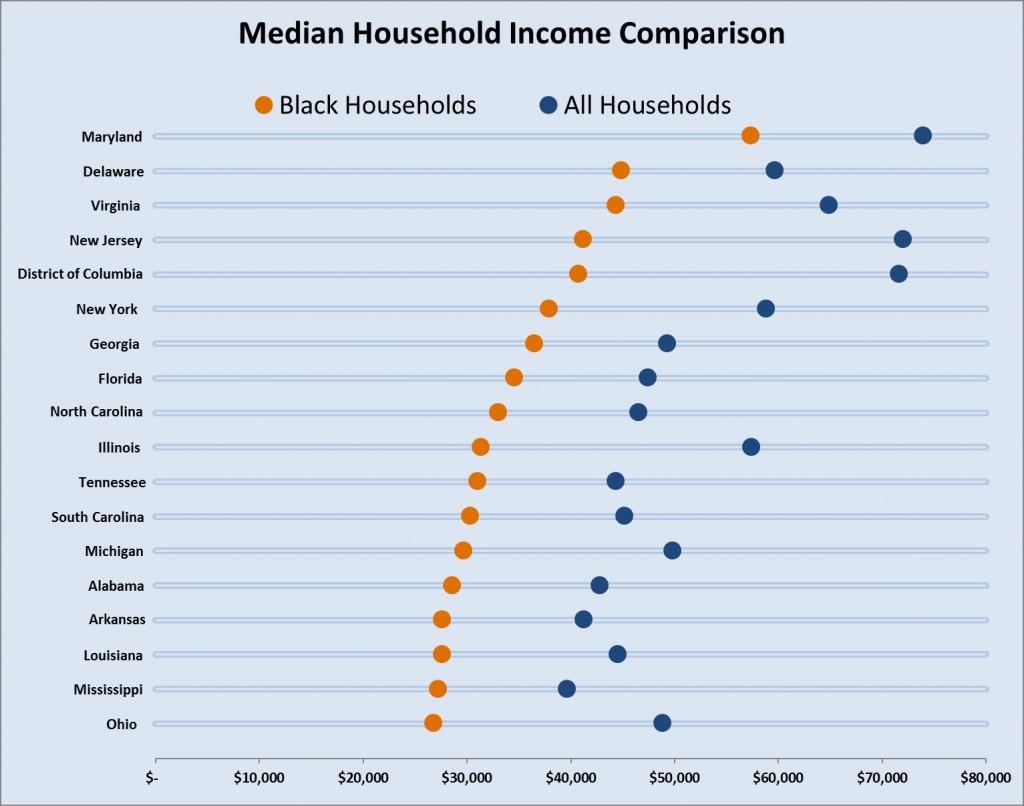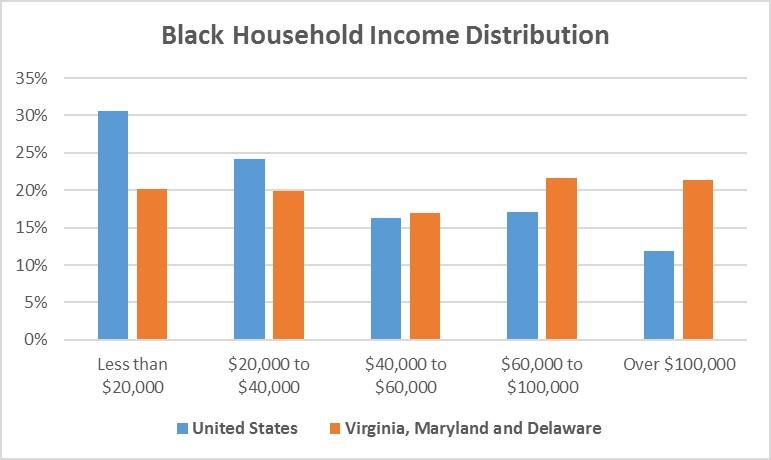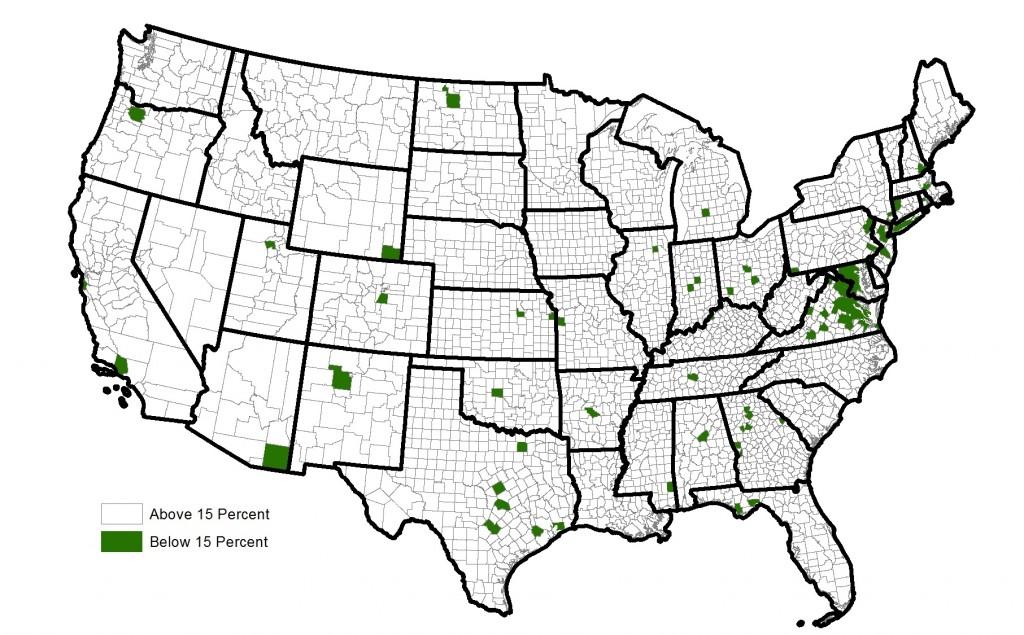Black households earn more in the Mid-Atlantic, but there is no simple explanation why
One of the most persistent statistics in American demography has been the gap that exists between Black Americans’ incomes and the rest of the population. But among those who identified themselves as Black or African American in 2014, there were noticeable geographic differences in their incomes. In states with a substantial Black population, Virginia, Maryland and Delaware had the highest household incomes and lowest poverty rates among Blacks. While the median household income for Blacks in these three states is still only about 70 percent of the median income for all their households, it is noticeably higher than in many other states where the typical Black household often earns closer to half that of non-Black households.

The concentration of upper income Black households in these three neighboring states does not have a simple explanation. The federal government’s significant presence in the region certainly boosts incomes across the board. But other states with high levels of federal salary expenditures, such as West Virginia and Alabama, are not nearly as well off. Additionally, a state being wealthy does not always mean that its Black residents also have high income levels; the median household income in Illinois is only $2,000 less than in Delaware, but the median household income for its Black residents is $12,000 (or 25 percent) less than Black residents’ median household income in Delaware.

Black residents’ income distribution in Virginia, Maryland and Delaware also trends higher than in the rest of the country. Within these states, Black households are a third less likely to earn below $30,000 than Black households nationally. Likewise, Black households in the three states are close to twice as likely to earn more than $100,000 annually than other U.S. Black households.

Data is from the Census 2014 American Community Survey, counties with small Black populations and large margins of error were excluded
Nationally, it is not uncommon for some wealthy suburban counties to also have a significant number of upper income Black households. But it is less common for their Black residents to earn more than the rest of population, as is the case in Stafford County, Virginia or Prince George County, Maryland. Moreover, in Virginia particularly, its upper income Black population is spread throughout the eastern part of the state, in rural and urban localities as well. 2014 Census data shows that all three of Virginia’s largest metro areas are among the top ten metro areas nationally with the highest Black household incomes and lowest Black poverty rates.
In a follow up post, I will examine how Black households in the mid-Atlantic came to be wealthier than in the rest of the country.


